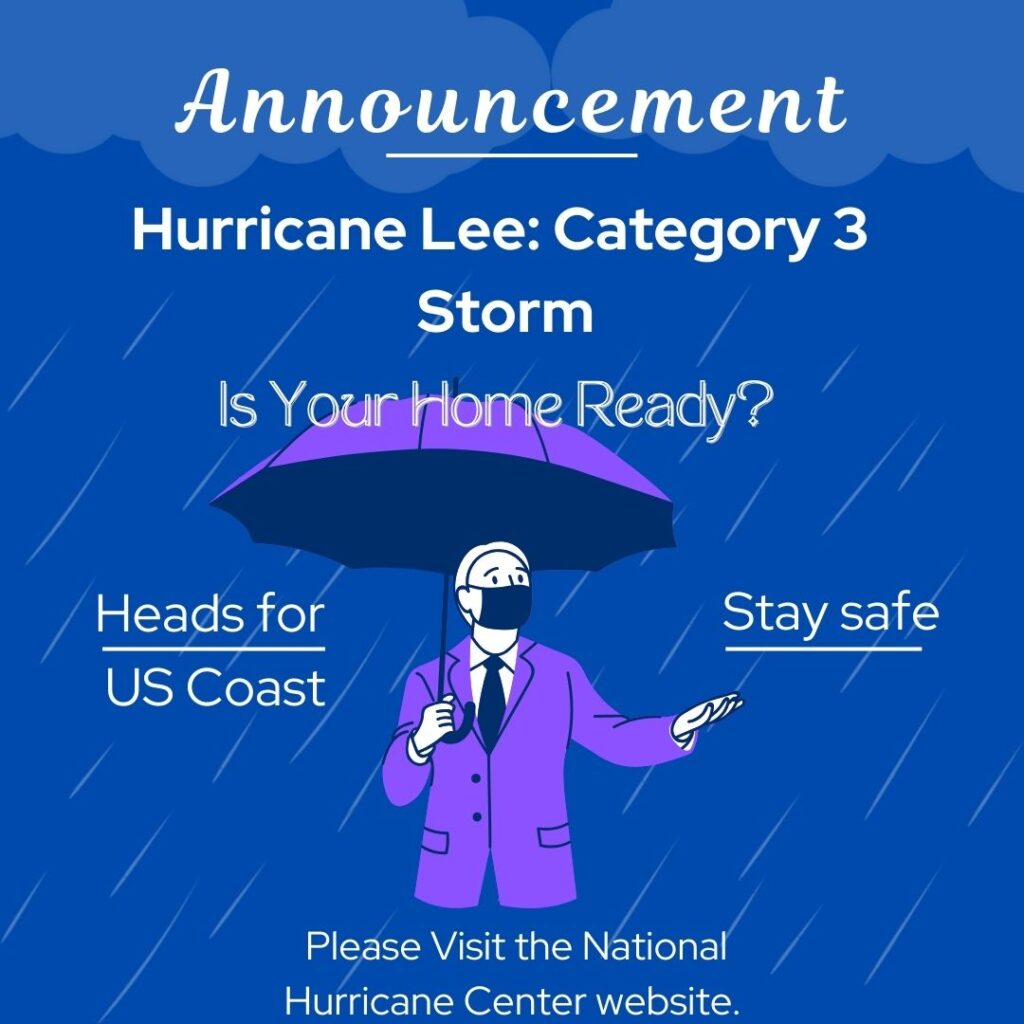
As Hurricane Lee draws ever closer to the United States coast, it has been upgraded to Category 3 status. Currently, the storm is situated approximately 600 miles south-southeast of the Isle of Wight in North Carolina, with maximum sustained winds of 15 mph. It is anticipated that Lee will make landfall in the state of North Carolina, or Virginia, on either Wednesday or Thursday.
Hurricane Lee is expected to produce wind speeds of 115 mph with gusts of up to 140 mph. Rainfall amounts are expected to be between 10 and 15 inches in North Carolina, with isolated rainfall amounts of 20 inches in Virginia and Maryland.
The National Hurricane Center (NHC) has issued a Hurricane Watch for the coast of North Carolina from Cape Fear to the Virginia border. The National Weather Service (NWS) has issued a Tropical Storm Watch for the Virginia coast from the Virginia-North Carolina border to the Chincoteague area.
If you live in an affected area, prepare for hurricane-force winds, heavy rain, and flash floods. If you have to evacuate your home or business, have a plan in place.
Another tropical disturbance has been identified by the National Hurricane Center (NHC). Moving west-northwest near 15 mph, the disturbance is approximately 1,000 miles (2,100 kilometers) east of the Lesser Antilles. The NHC is forecasting a 40% chance for the disturbance to become a tropical depression (Tropical Storm) or tropical storm (Tropical Cyclone) in the next five days.
If you are in the path of Hurricane Lee, please take the following precautions:
- Be aware of Hurricane Lee’s projected path and stay up to date on the latest forecasts and warnings.
- If advised to evacuate, do so. Secure your home and possessions.
- Make sure you have a plan in place for your animals.
- Be ready for any power outages or other outages that may occur.
For more information about Hurricane Lee, visit the National Weather Service’s website.